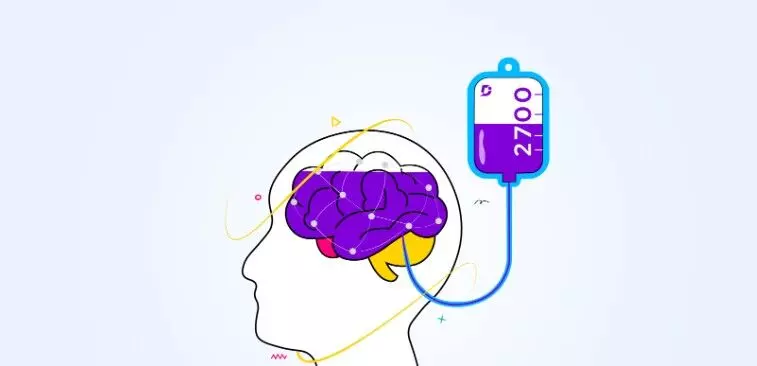Unlocking the Power of Implicit Knowledge: Understanding Learned Skills and Know-How

In an international inundated with facts and records, the idea of know-how transcends the mere accumulation of facts. It incorporates a deeper expertise and alertness of discovered capabilities and know-how, frequently known as implicit information. Implicit know-how is the cornerstone of understanding, using innovation, problem-fixing, and efficiency across numerous domain names.
Types of Knowledge
Before delving into the intricacies of implicit expertise, it's essential to understand the wider panorama of the knowledge itself. Knowledge can be extensively classified into the most important types: explicit and implicit.
Explicit Knowledge: This type of understanding is tangible and easily codified. It includes records, figures, tactics, and other types of statistics that can be with ease articulated, documented, and transferred. Examples of express expertise include textbooks, manuals, databases, and procedural documents.
Implicit Knowledge: Unlike specific understanding, implicit understanding is intangible and deeply ingrained within individuals or companies. It accommodates learned talents, experiences, insights, intuition, and tacit expertise which are hard to articulate or transfer through traditional approach. Implicit know-how is frequently obtained through hands-on revel in, commentary, experimentation, and immersion in unique contexts.
Harnessing Implicit Knowledge: Knowledge Bases vs. Intranets
In the digital age, companies leverage numerous tools and platforms to manipulate and disseminate information correctly. Two commonplace procedures encompass expertise bases and intranet, every serving wonderful purposes within the knowledge control panorama.
Knowledge Bases:
Knowledge bases are centralized repositories designed to capture, arrange, and disseminate specific information inside a business enterprise. They generally include based databases, documents, articles, FAQs, and other assets that provide personnel with get admission to applicable information. Knowledge bases facilitate smooth retrieval of explicit expertise, allowing personnel to quickly find answers to unique queries or access procedural recommendations.
However, information bases have inherent obstacles on the subject of taking pictures of implicit information. While they excel at storing real facts and documented techniques, they fail to capture the nuanced nuances of experiential studying, instinct, and tacit understanding that underpin implicit understanding.
Intranets:
Intranets function as inner communication and collaboration systems within companies, facilitating the exchange of facts, ideas, and assets among personnel. While intranets may also host elements of specific know-how inclusive of documents, announcements, and information updates, their actual value lies in fostering collaboration, expertise sharing, and social studying.
Unlike information bases, intranets offer conducive surroundings for tacit know-how change through forums, dialogue forums, communities of exercise, and casual interactions. Employees can leverage intranets to look for recommendations, percentage reviews, and collaborate on solving complicated problems, thereby tapping into the collective knowledge of the organization.
Bridging the Gap: Integrating Implicit Knowledge into Knowledge Management
While information bases and intranets serve wonderful capabilities in understanding management, corporations ought to apprehend the complementary nature of implicit and explicit know-how. To harness the total spectrum of organizational expertise successfully, it's essential to undertake a holistic technique that integrates both implicit and specific expertise management strategies.
Capturing Implicit Knowledge:
Organizations can put into effect strategies to seize and codify implicit expertise, transforming tacit knowledge into express insights that can be shared and preserved. This might also include accomplishing know-how elicitation periods, storytelling workshops, mentorship programs, and groups of practice geared toward documenting and disseminating experiential knowledge of and expertise.
Facilitating Knowledge Sharing:
Intranets play a pivotal characteristic in fostering a lifestyle of knowledge sharing and collaboration in inner businesses. By presenting employees with platforms for dialogue, collaboration, and social getting to know, intranets facilitate the trade of implicit knowledge, allowing individuals to study from every other's study, insights, and perspectives.
Curating Knowledge Repositories:
Integrating implicit and explicit understanding within centralized information repositories can offer personnel a completely useful resource for gaining knowledge and hassle-solving. By curating a wide variety of content material, which includes files, articles, case studies, fine practices, and experiential narratives, groups can create a dynamic information atmosphere that caters to various getting-to-know patterns and choices.
Conclusion
Implicit know-how lies at the heart of understanding, driving innovation, creativity, and problem-solving inside businesses. While express information may be without problems documented and transferred via knowledge bases, implicit knowledge poses particular challenges because of its intangible nature. By leveraging intranets as systems for expertise sharing and collaboration, businesses can bridge the space between implicit and express know-how, fostering a lifestyle of continuous getting-to-know and innovation. Embracing the synergies between implicit and specific expertise control is important for unlocking the full capacity of organizational expertise in a trendy unexpectedly evolving landscape.




















